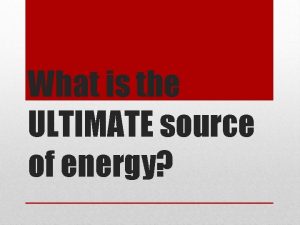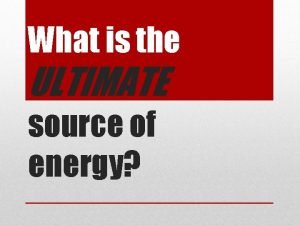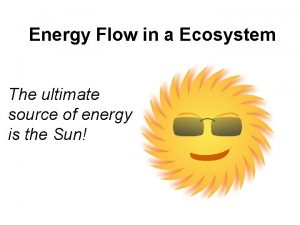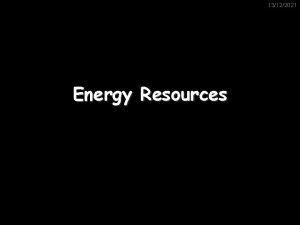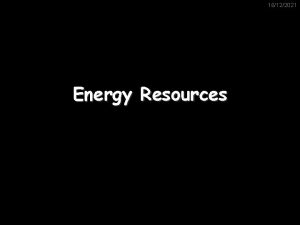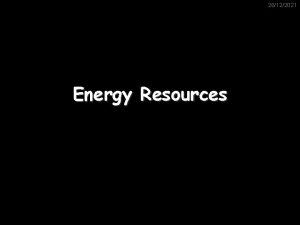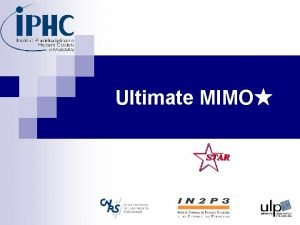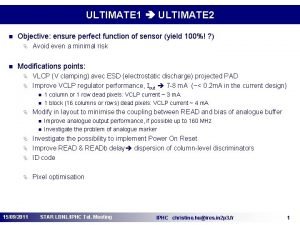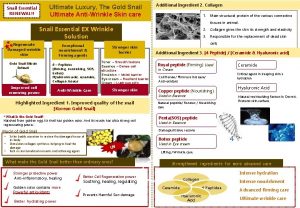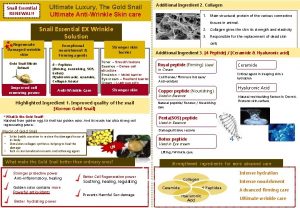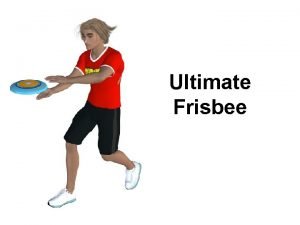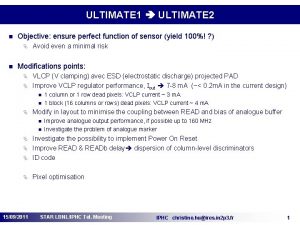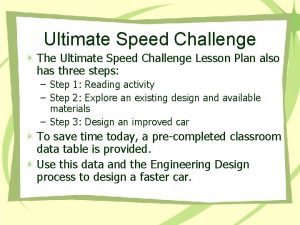Cell Energy Cell Energy The ultimate source of

























- Slides: 25

Cell Energy

Cell Energy The ultimate source of energy for all life is the sun. �Autotrophs are organisms that can make their own food ex. plants, algae, cyanobacteria

Cell Energy �Heterotrophs are organisms that have to consume food to get energy �ex. animals, fungi

ATP (adenosine triphosphate) ATP is the form of energy used by cells 3 parts: 1. adenine 2. ribose sugar 3. three phosphate groups

ATP Energy is stored in the bond between the 2 nd and 3 rd phosphate group. What molecule is made when the energy is released from the ATP? ADP

Photosynthesis

Photosynthesis 6 CO 2 + 6 H 2 O + light C 6 H 12 O 6 + 6 O 2 carbon dioxide + water + light glucose + oxygen What kind of organisms carry out photosynthesis? autotrophs

Photosynthesis Autotrophs have pigments – molecules that trap specific wavelengths of light Examples: Chlorophyll Carotene Xanthophyll

Photosynthesis Where in the cell does photosynthesis take place? Chloroplast

Light Reactions (light-dependent reactions) �Where does it happen? thylakoid membrane �What goes in? light & water �What comes out? oxygen, ATP, electron carriers

Calvin Cycle (light-independent or dark reactions) �Where does it happen? stroma �What goes in? CO 2, ATP, electron carrier �What comes out? glucose sugar


Cell Respiration

Cellular Respiration 6 O 2 + C 6 H 12 O 6 6 CO 2 + 6 H 2 O + energy oxygen + glucose carbon dioxide + water + ATP �This is an aerobic process which means it requires oxygen

3 stages of aerobic respiration Step 1: Glycolysis �Starts with glucose �Produces ATP, electron carrier, & pyruvate �Occurs in cytoplasm

3 stages of aerobic respiration Step 2: Krebs cycle (citric acid cycle) �Starts with pyruvate (changed to acetyl-Co. A) �Produces CO 2 , ATP, & electron carriers

3 stages of aerobic respiration Krebs cycle cont. �Occurs in matrix of the mitochondria

3 stages of aerobic respiration Step 3: Electron Transport Chain �Starts with electron carriers & oxygen

3 stages of aerobic respiration �Produces water & ATP �Occurs on inner membrane

3 stages of aerobic respiration

Fermentation �This happens when NO oxygen is present. �This is anaerobic, meaning. . . no oxygen is required

Alcoholic Fermentation �Occurs in cytoplasm of bacteria & yeast �Starts with pyruvate (from glycolysis) �Produces ethyl alcohol & carbon dioxide �Uses: makes alcohol & bread

Lactic Acid Fermentation �Occurs in cytoplasm of muscle cells & bacteria �Starts with pyruvate (from glycolysis) �Produces lactic acid

Lactic Acid Fermentation �Causes. . . burning sensation after vigorous exercise �Uses: makes sauerkraut & yogurt

 Ultimate source of energy in food
Ultimate source of energy in food Ultimate source of energy in food chain
Ultimate source of energy in food chain Ultimate source of energy in an ecosystem
Ultimate source of energy in an ecosystem Anglicanism beliefs
Anglicanism beliefs Detritivores and decomposers
Detritivores and decomposers Hát kết hợp bộ gõ cơ thể
Hát kết hợp bộ gõ cơ thể Bổ thể
Bổ thể Tỉ lệ cơ thể trẻ em
Tỉ lệ cơ thể trẻ em Voi kéo gỗ như thế nào
Voi kéo gỗ như thế nào Tư thế worms-breton
Tư thế worms-breton Hát lên người ơi
Hát lên người ơi Các môn thể thao bắt đầu bằng tiếng bóng
Các môn thể thao bắt đầu bằng tiếng bóng Thế nào là hệ số cao nhất
Thế nào là hệ số cao nhất Các châu lục và đại dương trên thế giới
Các châu lục và đại dương trên thế giới Công của trọng lực
Công của trọng lực Trời xanh đây là của chúng ta thể thơ
Trời xanh đây là của chúng ta thể thơ Mật thư anh em như thể tay chân
Mật thư anh em như thể tay chân Phép trừ bù
Phép trừ bù độ dài liên kết
độ dài liên kết Các châu lục và đại dương trên thế giới
Các châu lục và đại dương trên thế giới Thể thơ truyền thống
Thể thơ truyền thống Quá trình desamine hóa có thể tạo ra
Quá trình desamine hóa có thể tạo ra Một số thể thơ truyền thống
Một số thể thơ truyền thống Bàn tay mà dây bẩn
Bàn tay mà dây bẩn Vẽ hình chiếu vuông góc của vật thể sau
Vẽ hình chiếu vuông góc của vật thể sau
